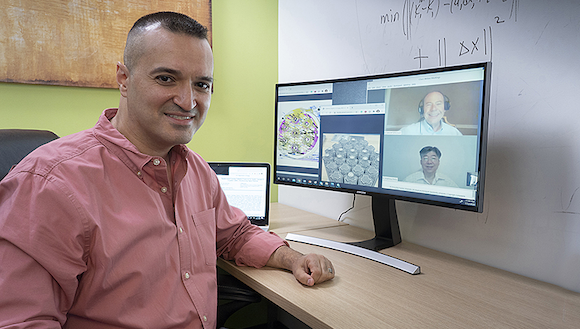Purdue receives funding from US Dept of Energy to accelerate adoption of metal AM microreactors
September 6, 2020

The U.S. Department of Energy has awarded an $800,000 grant to Purdue University’s College of Engineering in West Lafayette, Indiana, USA, for a project to accelerate the introduction of its metal additively manufactured microreactor – a new type of nuclear reactor said to have the flexibility and versatility needed for many current energy applications.
The Nuclear Energy University Program funding will enable Purdue to serve as a key contributor to the Transformational Challenge Reactor Demonstration Program, in which the Department of Energy’s Oak Ridge National Laboratory (ORNL) is working to build the first AM microreactor by 2023. The microreactor will be the first advanced reactor to operate in the US in more than forty years.
The Purdue project is intended to drive the use of Additive Manufacturing, computation materials modelling, and AI concepts in creating nuclear reactor components. The goal of all these technologies is to significantly reduce manufacturing costs and development time, and to realistically estimate safety risks while offering reliability and convenient access to nuclear power.
“Microreactors introduce a transformational trend to the nuclear industry – a trend that enables more streamlined construction and deployment processes to address the nation’s energy challenges, that cannot be overcome solely with large-scale nuclear reactors,” stated Hany Abdel-Khalik, Technical Lead for the project and Associate Professor of Nuclear Engineering.
“Purdue will fill a technological gap in the nuclear industry, reflecting a broader trend of applying AI strategies to support Additive Manufacturing,” explained Abdel-Khalik. “AM enables designs to be adjusted during manufacturing, greatly decreasing production cost and time. Our work is aimed at driving widespread adoption of additively manufactured reactor components using an AI-powered software system to ensure safety and reliability.”
Kurt Terrani, director of the TCR programme at ORNL, commented, “Synchronised application of Additive Manufacturing and artificial intelligence techniques are key to providing the most data-rich and cost-effective nuclear component qualification process. This is one of the key goals of DOE-NE’s TCR programme: using modern technology to deliver a new and better way to deploy nuclear energy.”
“The programme is engaging the industry, the regulator and, in this case, universities in order to ensure an optimal approach is developed and adopted in widespread fashion,” he continued. “The technical strength of the Purdue team will shore up our ability to deliver on these goals.”
The project team also includes Project Leader John W Sutherland, the Fehsenfeld Family Head of Environmental and Ecological Engineering; Steven Shade, the Ball Brothers Director of Advanced Manufacturing Initiatives, who is affiliated with Environmental and Ecological Engineering; and Xinghang Zhang, co-principal Investigator and Professor of Materials Engineering, with a background in AM and other areas of manufacturing.
Zhang explained that Purdue’s solution will apply reinforcement learning, a kind of AI that uses advanced machine learning strategies to fine-tune the selection of the optimum AM process parameters – build speed and melting temperature in this case – to train the AI models and guide decision making.
















